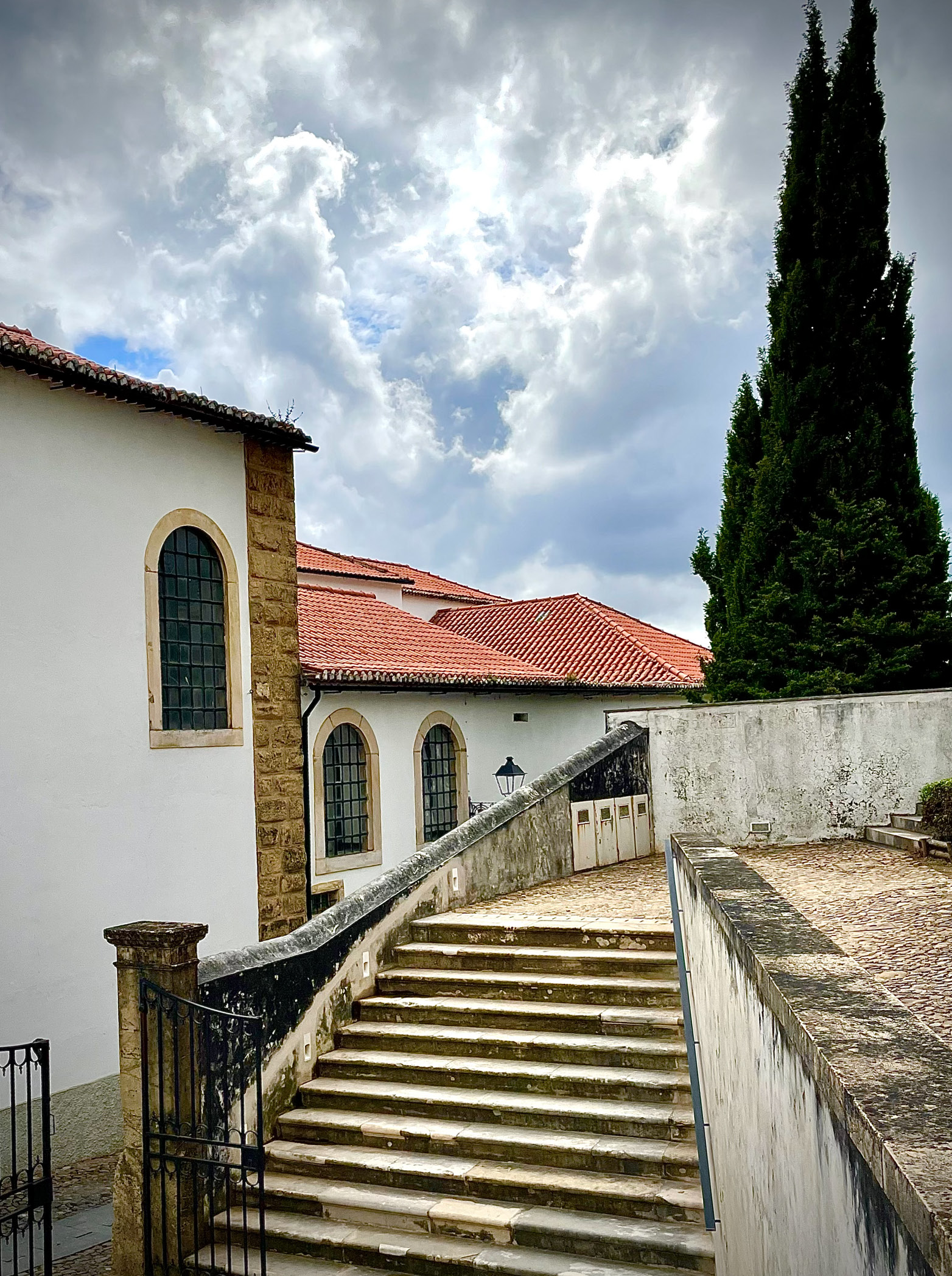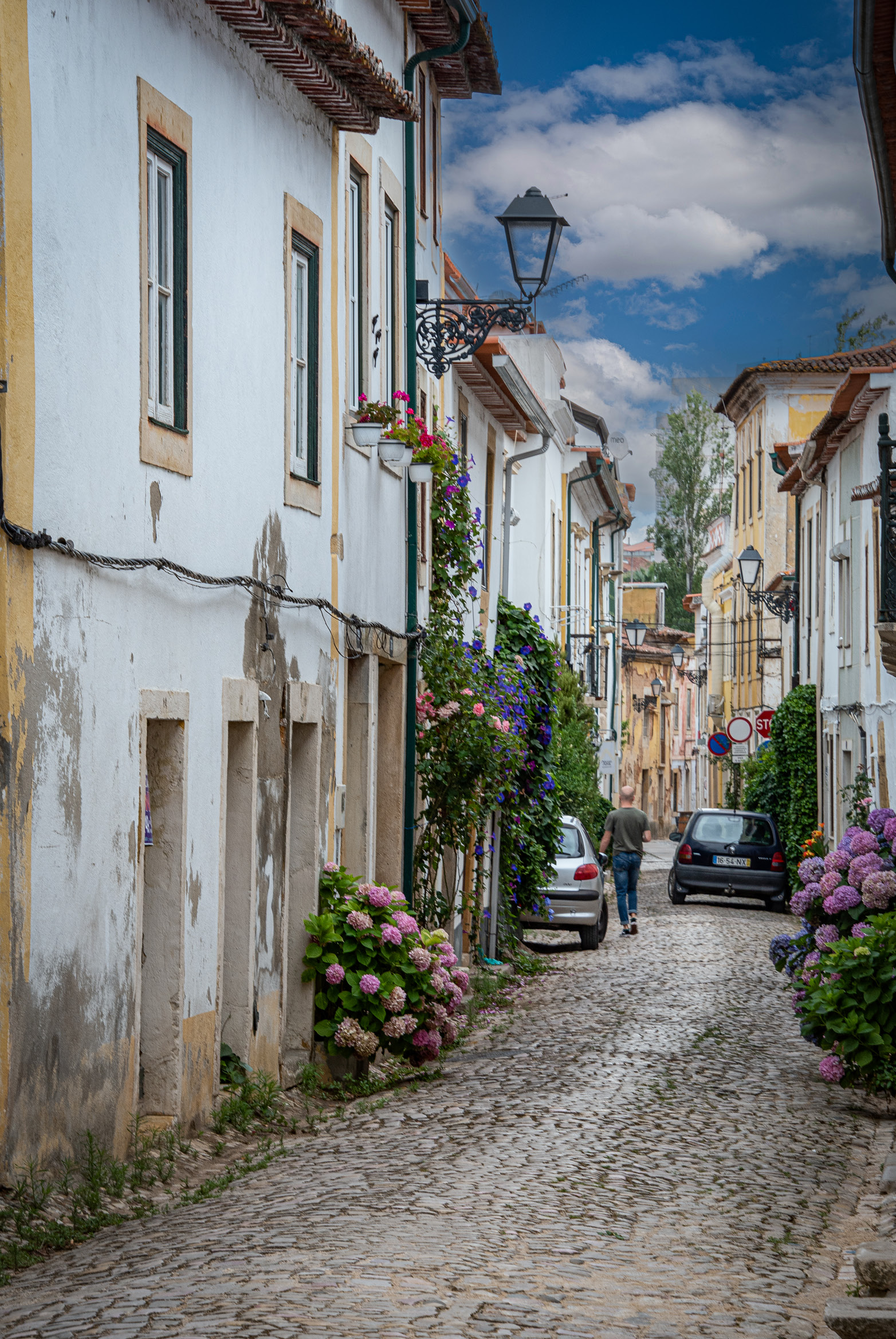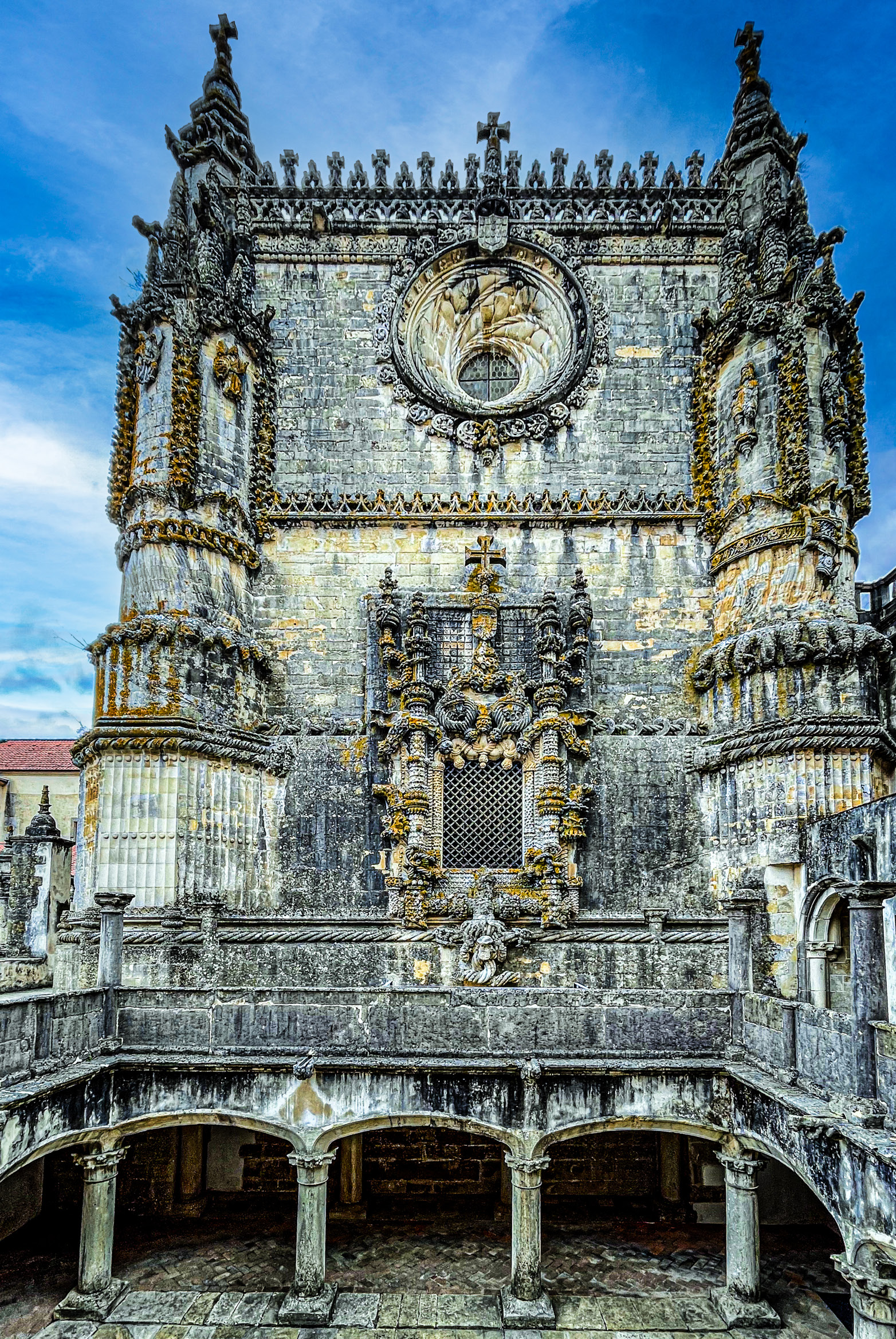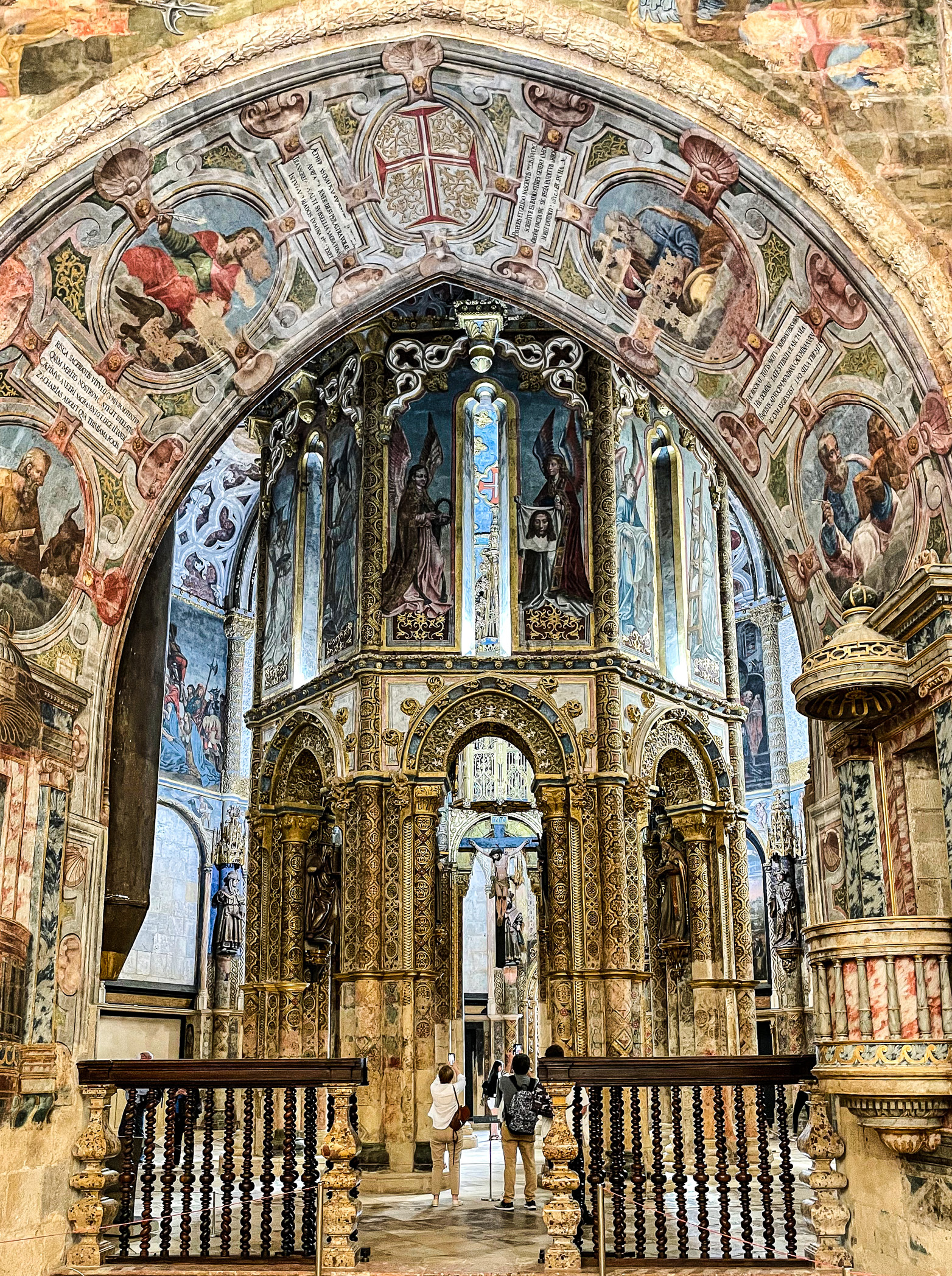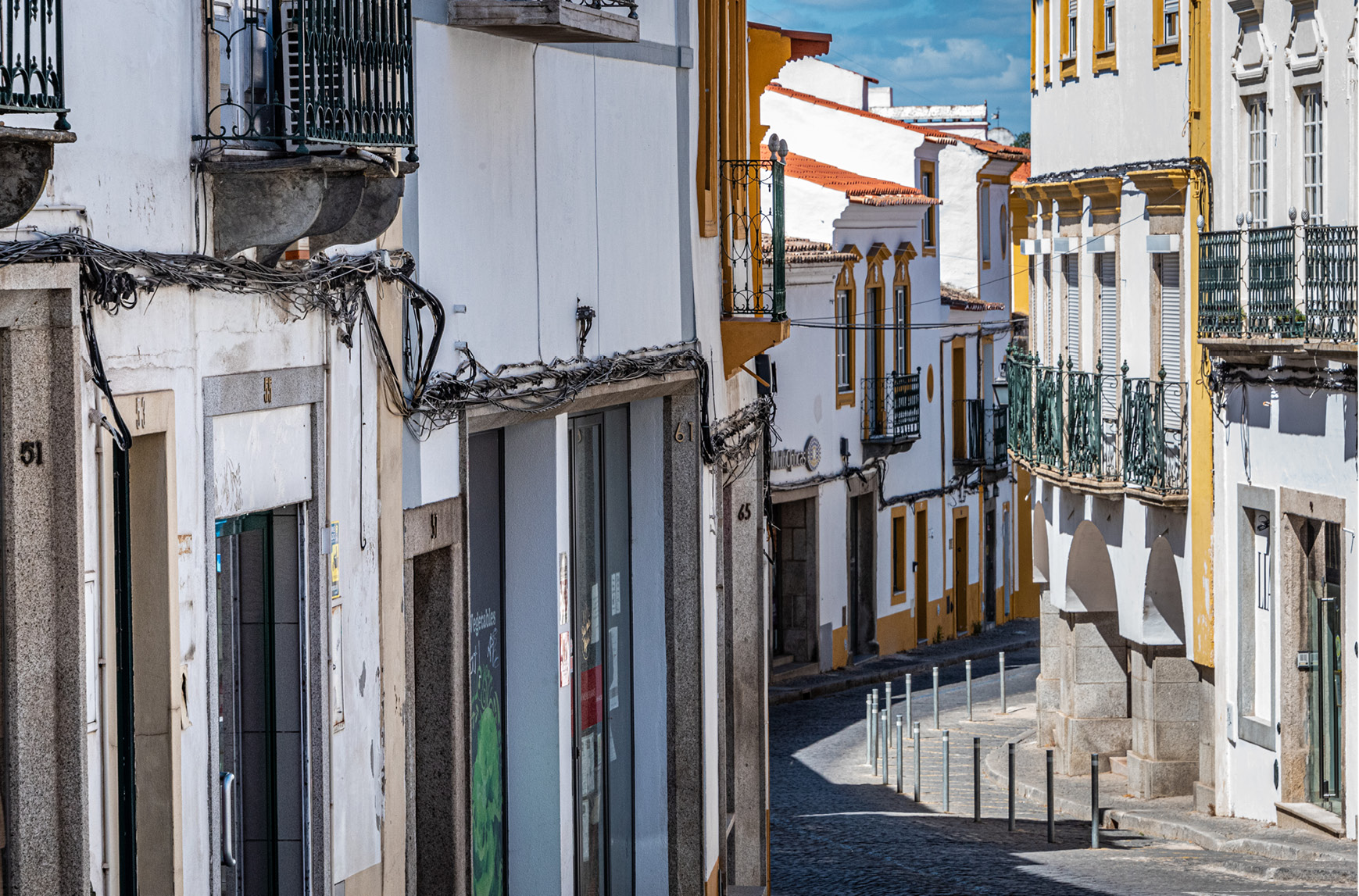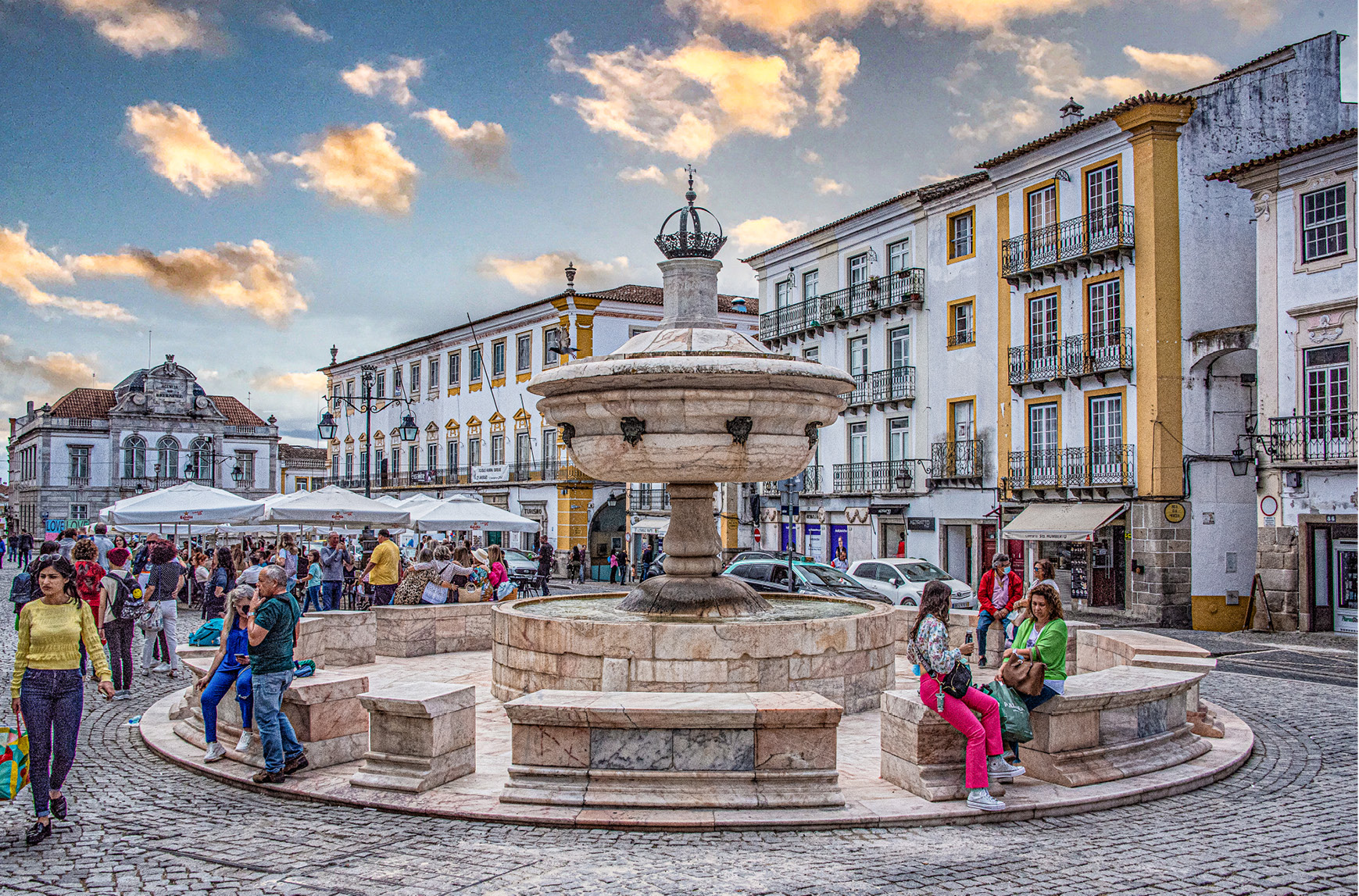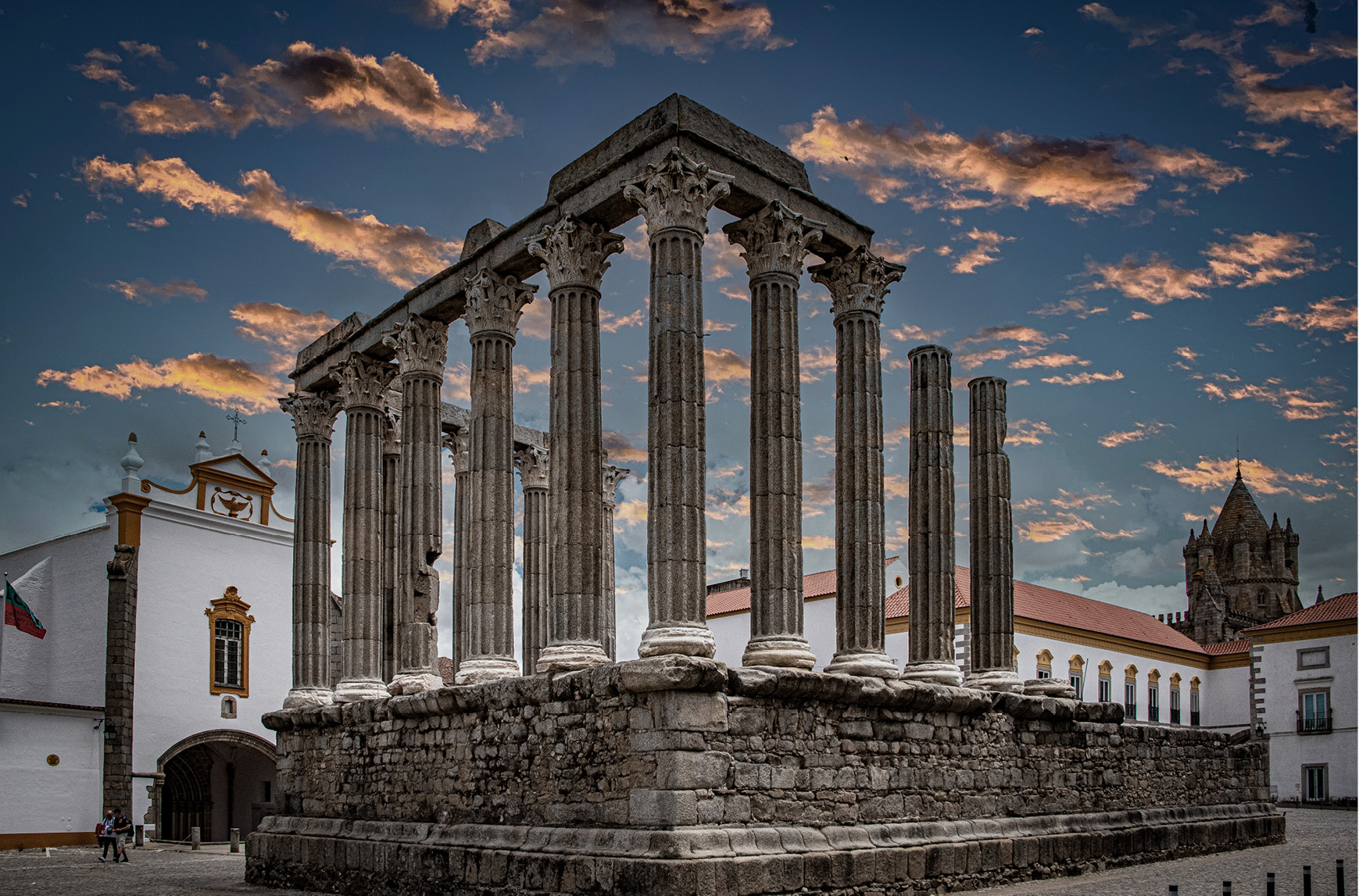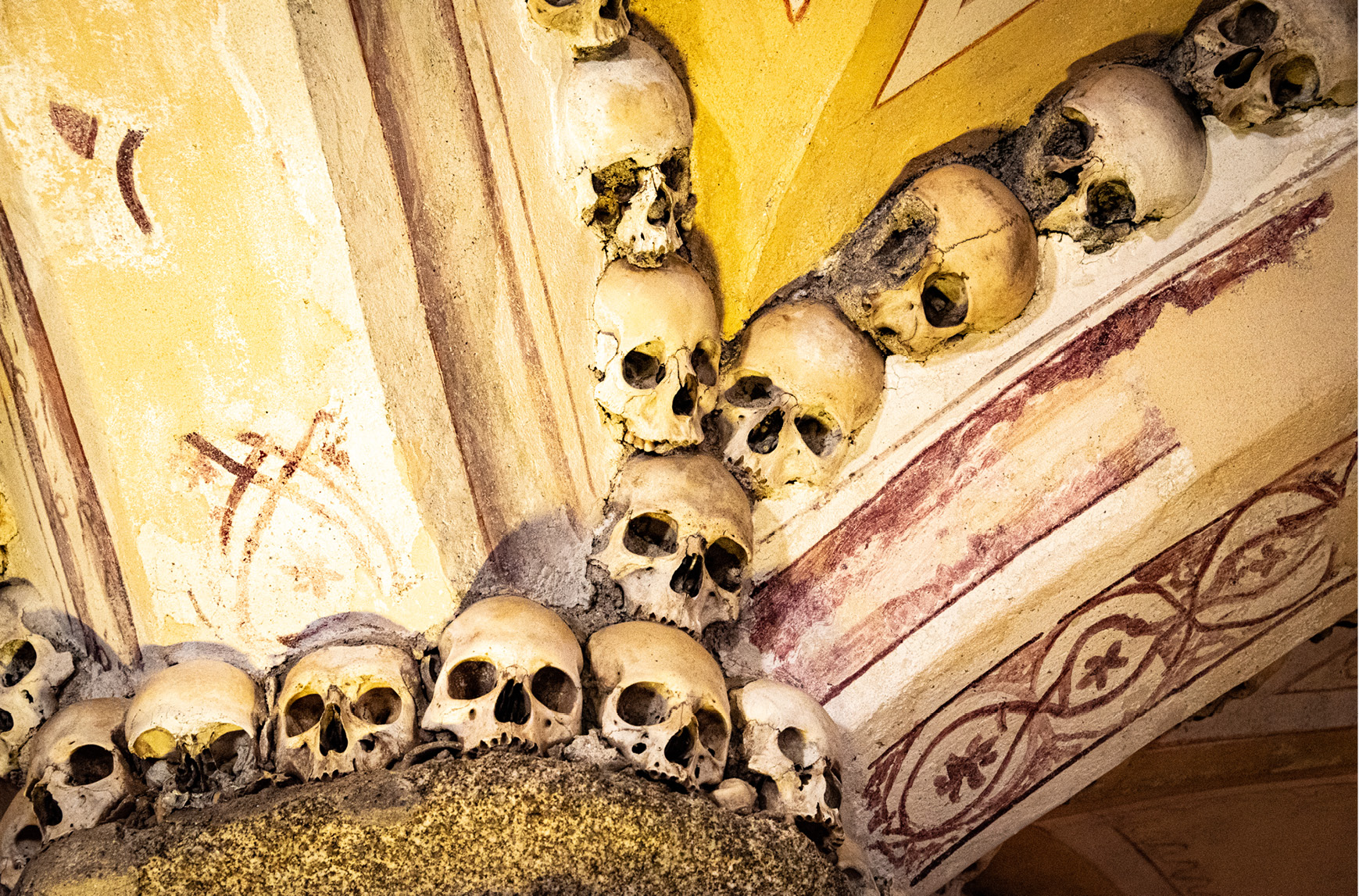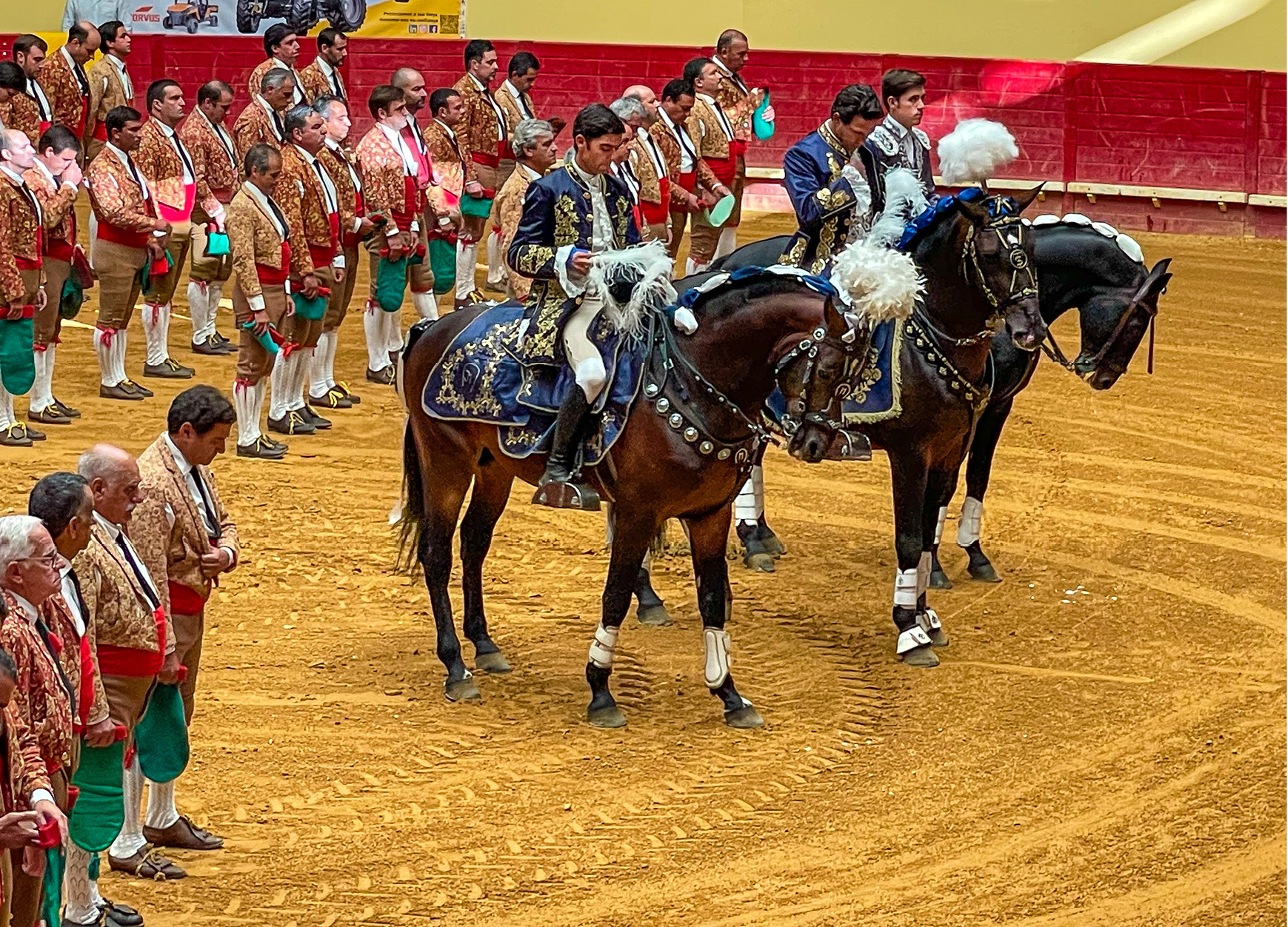Pictured above: Brilliant green hedges pillow this Batalha Monastery cloister
Heading To Central Portugal, We Immerse Ourselves In Antiquity
At the end of the last Portugal episode, the Fiat and its two passengers left Porto in heavy rainfall as we headed south towards the country’s central region and some of its oldest cities, most with Roman connections and one dating to pre-historic Celtic period. Bad weather made driving the Fiat and exploring two significant destinations challenging.
First stop––Aveiro, a city situated on a 27-mile-long saltwater lagoon separated from the Atlantic Ocean by a giant sandbar. Three canals crisscross the city. Colorful boats called moliceiros filled with tourists ply their waters to sight-see the charming old center town, notable for its attractive Art Nouveau and Romanesque buildings. But constant drizzle and the requisite umbrellas dampened our enthusiasm to explore the attractive town further.
Coimbra’s reputation as the location of the lauded University of Coimbra and the city’s well-preserved medieval old town heightened my enthusiasm for visiting this former capital of Portugal. But the weather held us up earlier in the day so we only had a couple of hours to spend in the city until we needed to head to our night’s lodgings a few hours away.
We decided to visit the University, one of the world’s oldest operating schools of higher education, the Jesuits first opening its doors in 1290. The UNESCO folks dubbed it a World Heritage site in 2013, because of its notable architecture, cultural traditions, and historical role in education.
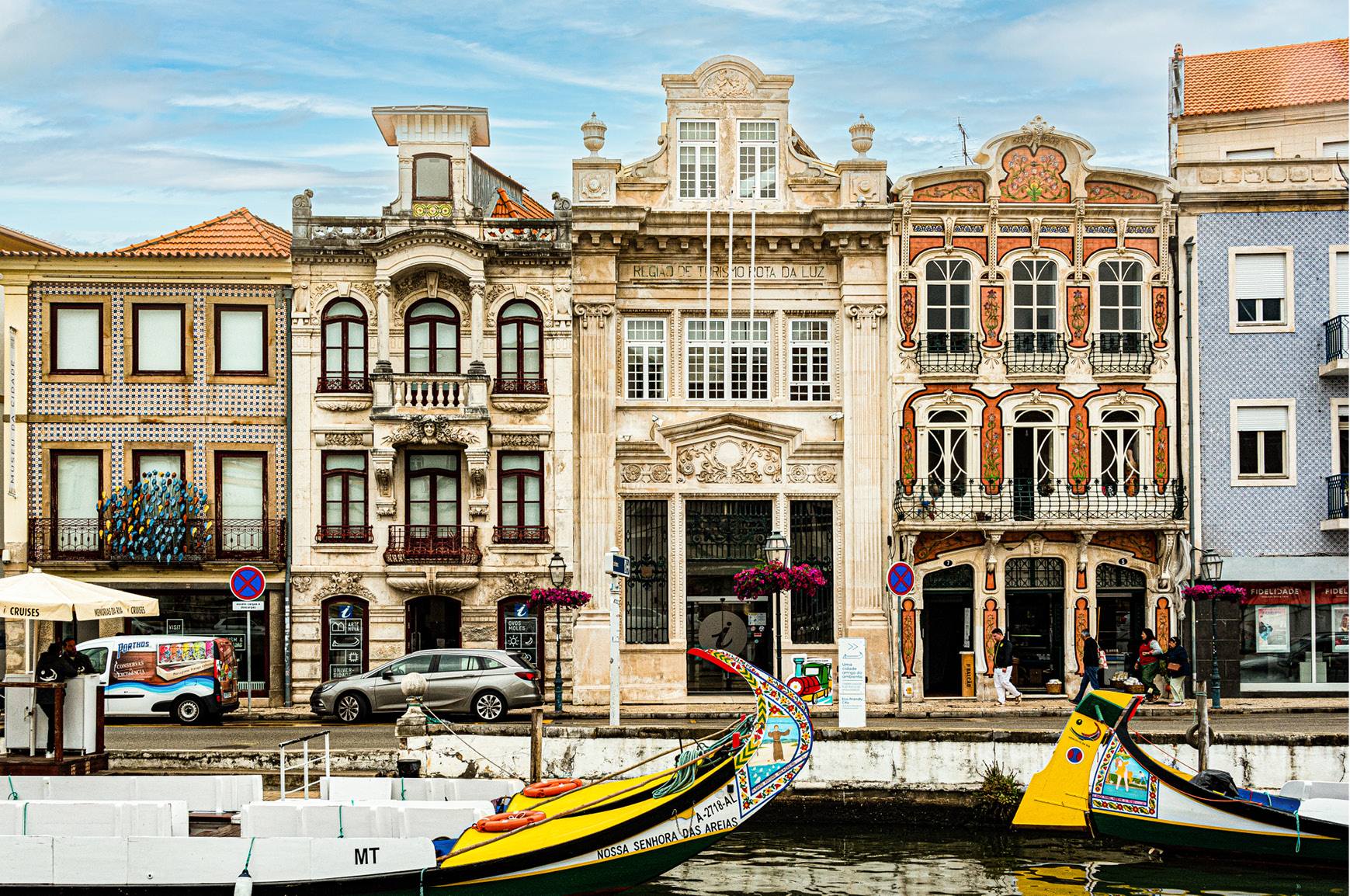
It’s Not Your Neighborhood Library
We especially wanted to visit its famous and revered baroque library, Biblioteca Joanina, considered one of the most beautiful libraries worldwide. Indeed, Biblioteca is an artistic and archival wonder. Constructed in the early eighteenth century, it houses over 250,000 volumes mostly from the 1500s through the 1700s.
Docents guided our ten-person English-speaking group (they conduct tours in other languages). From the entrance at the basement level (it used to be a prison, shackles still evident), the no-nonsense guide led us up two floors to the main library room––where my eyes popped open and jaw dropped.
Awe-inspiring artwork, including carved images and fretwork using rare South American wood painted with gold leaf, covered the walls above the two-level bookshelves. The motifs, which included interpretations of Chinese and Asian subjects among others, represents the extent of the Portuguese empire from its colonial sea-faring heydays. No photographs allowed!
Biblioteca Joanina also has bats. Yes, a colony of bats––one of two libraries worldwide that host them. I didn’t see them on this visit, but the docent told us that at night the bats roam the stacks devouring insects that destroy books. Staff cover horizontal surfaces with leather sheets in the late evening and remove and clean off the guano in the morning. An organic solution to pest control; no need to call an exterminator, I suppose.
Coimbra has so much more to offer than we saw, including a preserved medieval old town with many historically important structures from the Roman period. Put a star next to Coimbra on your “Must-See” Portugal list.
Two Monasteries Reflect Historical Drama
We headed south to the late twelfth century town of Tomar, our overnight stop and an attractive highlight in our travels. Created by the Order of Knights Templar’s grandmaster, the medieval town with its twisting, winding streets, sets the atmospheric tone for the magnificent, sprawling Convento de Cristo, sitting high above the town.
The Knights Templar used the stronghold to fend off the Moors, who still held land to the south. When Pope Clement V abolished the Order in 1312, he then created the Order of Christ, whose monks took over the complex. The mystery surrounding the apparently contrived political reasons for the Order’s demise led to legends and speculations that keep the Knights Templar mystique alive even today. (Remember Dan Brown’s The Da Vinci Code?)
Under construction for over five centuries, the walls of the monastery’s castle, with a few sections collapsed, display Romanesque pinnacles. They surround the unusual circular church––sixteen sides actually––spectacularly appointed with colorful murals and images; eight cloisters (open quadrangles, often green, bordered on all sides by covered walkways); barracks for the knights; huge kitchens; and carved, winding staircases to connect floors. Besides a handful of visitors and a well-behaved school group, we enjoyed roaming the cavernous halls, rooms, and cloisters by ourselves.
Before heading further south, we traveled to the town of Batalha with the promise that the Dominican Batalha Monastery wasn’t just another church complex. No hyperbole here; an over-the-top masterpiece represents the height of “late flamboyant Gothic” style, along with Portugal’s indigenous Manueline architecture. Its construction celebrated the victory of the Portuguese over the Spanish Castilian usurpers at the battle of Aljubarrota and served as a thank-you to the Virgin Mary for facilitating the win.
Like Convento de Cristo in Tomar and other piles of stone developed into cathedrals across Europe, Batalha wasn’t built in a day, started in 1386 and completed in 1517. The monastery fell into disrepair after the Dominicans were expelled in 1834, following Napoleanic troops’ sack and burn scourge and some damage from the great 1755 earthquake. In 1840 King Ferdinand II initiated a 70-year restoration project, and the government declared Batalha Monastery a National Monument in 1907.
Considered the finest monastery in Portugal, the exterior is a knockout, looking like a castle from a graphic fantasy novel. The interior is more barren and colder than its Tomar counterpart. But there’s no doubt that tourists to Portugal should plan a visit to view this spectacular structure.
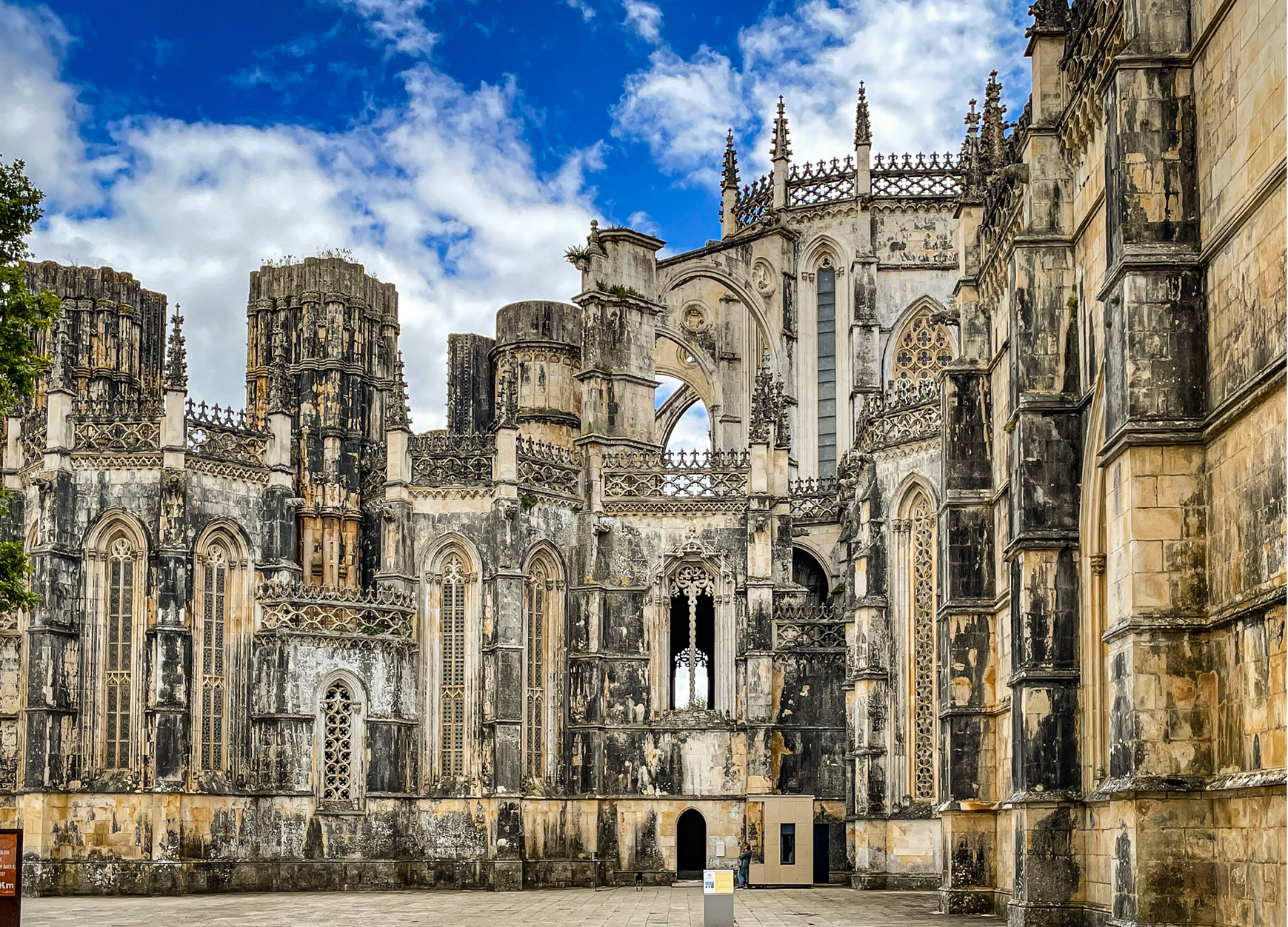
World Heritage-designated Évora Surprises Us
I turned the Fiat south towards the central plains city of Évora for a two-night stay on the last leg of the road trip before returning to Lisbon. By this point in our travels, I thought I would be unimpressed with the prettiness of another timeless ancient UNESCO World Heritage Portuguese city. Not so. Évora was my favorite small city of this holiday.
Its sun-bathed old-world grandeur, including Roman ruins, medieval small streets, Moorish architecture, the colonnaded Praça do Giraldo (central square) with its baroque fountain, and its cathedral and churches––herald its 5000-year-old history. Our charming boutique hotel just inside the ancient walls of this cobblestoned city in Portugal’s central region, the Alentejo, provided easy access to soak up Évora’s atmosphere.
While evidence confirms a Celtic settlement in the second century, the Romans created a flourishing town, an important trade and travelers’ route. The old city’s walls and remnants of a public bath house mark the Roman Empire’s reach. Following Visigoth and Moorish rule, the Portuguese recaptured the city. Évora reached its zenith in the 1400s when it became home to Portuguese kings, who built palaces, monuments, and religious buildings; many remain today, elevating the city’s elegant appearance.
Yet, what gives the old city its unified and overall pleasing character is the simple two to four-story white houses, many with ceramic blue-tiled walls (like Lisbon) and wrought iron balconies. Wandering the narrow streets, I could easily imagine horse-drawn carts piled with goods or carriages with wealthy residents clattering by over cobblestones. Attractive structures stand on every street, churches on many corners, remains of the Roman baths near the city’s Cathedral. We climbed the Cathedral’s narrow, winding staircase to the roof to enjoy a panoramic view of the red terracotta-tiled house tops.
We Enjoy Évora, To Its Bones
Thousands of human skulls. And thousands and thousands of human bones. Quite a sight to behold as I entered the Capela dos Ossos––The Chapel of Bones, part of the Royal Church of St. Francis. Bones cover walls and skulls line arches, the remains of about 5000 folks interred during the Middle Ages in over 40 cemeteries across Évora, taking up valuable land needed for development to accommodate the growing population.
“What should we do with all these bones?” the sixteenth century Franciscan monks must have asked themselves. Religious beliefs warned not to dispose of these remnants willy-nilly; that would condemn the souls of the dead to a terrible place. The monks built a chapel dedicated as an ossuary (bone depository) in which members of the wealthy Évora community could meditate on the transience of material life in the presence of inescapable death. The translation of the message over the chapel’s door: “We bones are here, waiting for yours.” The Chapel reminded me that none of us gets out of life alive.
We Couldn’t Pass Up An Opportunity
We ended our Évora stay indulging in a guilty pleasure. We saw our first––and last––bullfight, with all its glorious pomp and pageantry.
I never thought I’d choose to attend one. But I gave into curiosity upon seeing colorful posters. The main difference that distinguishes Portuguese from Spanish bullfighting is the Portuguese don’t kill the bull in the ring in front of the crowd. (That happens later, “backstage.” Small consolation for the bull, but less embarrassing for him.) This fact made it all seem a less violent activity. Plus, the boyfriend of the young woman at the hotel reception was a member of one of the team of eight men, called forcados who wrestle the bull on foot with their bare hands to stop his forward motion once the “fighting” is over. Another incentive.
The ceremonial music of the arena’s live band with horns blaring announced a colorful promenade of one hundred uniformed forcados. Then six bandarilheiros entered; their job is to distract the bull at times waving their pink capes (not red!) so men on horses can reposition themselves. Finally, three cavaleiros followed on noble horses with braided manes; they stab the bull with spears, along his spine, while their highly trained beasts, apparently skilled in dressage, dance and prance to attract the bull. Once the cavaleiros finished their work, the team of forcados brought the bull to a standstill. A posse of docile brown bulls entered the ring, corralling the exhausted beast and ushering him out the gate.
The show’s theatrics mesmerized me. At the same time, I felt sad for the bull whose hind quarters turned shiny red with blood.
We left at intermission. No olé.
Returning to Lisbon
Our last morning, we drove the two hours back to Lisbon and spent the afternoon in the Parque das Nações (Park of the Nations). Located in its eastern end, the city developed this section as the centerpiece of the 1998 Lisbon World Expo. Its broad open spaces located on the Tagus River are the antithesis of densely built central old town. Now thousands of new apartments fill some of those once open spaces.
The park’s star attraction is Europe’s largest aquarium, the huge Lisbon Oceanarium. While I expected the experience to be an afterthought at the trip’s conclusion, the enormous circular central tank impressed me, with hundreds of species of unusual, sometimes bizarre-looking fish. Around the tank’s perimeter, visitors walked over foot bridges through four compact world regional oceanographic regions––tropical, polar, Atlantic and Pacific Oceans––cleverly representing their habitats with fish and other indigenous creatures like tree frogs and penguins.
My question: how come the sizable sharks swimming in the main tank don’t dine on the smorgasbord of fish who share the same watery arena?
We returned the Fiat, paid for the self-inflicted damage, and spent the rest of the last day preparing for what we thought would be a long one-day trip to get back to Philadelphia. Not so. The adventure ended on a sour note––it took three days, with delayed and missed connecting flights and cancellations!
Portugal was so much more than I expected. I wonder if UNESCO has a designation for an entire country as a World Heritage site.

